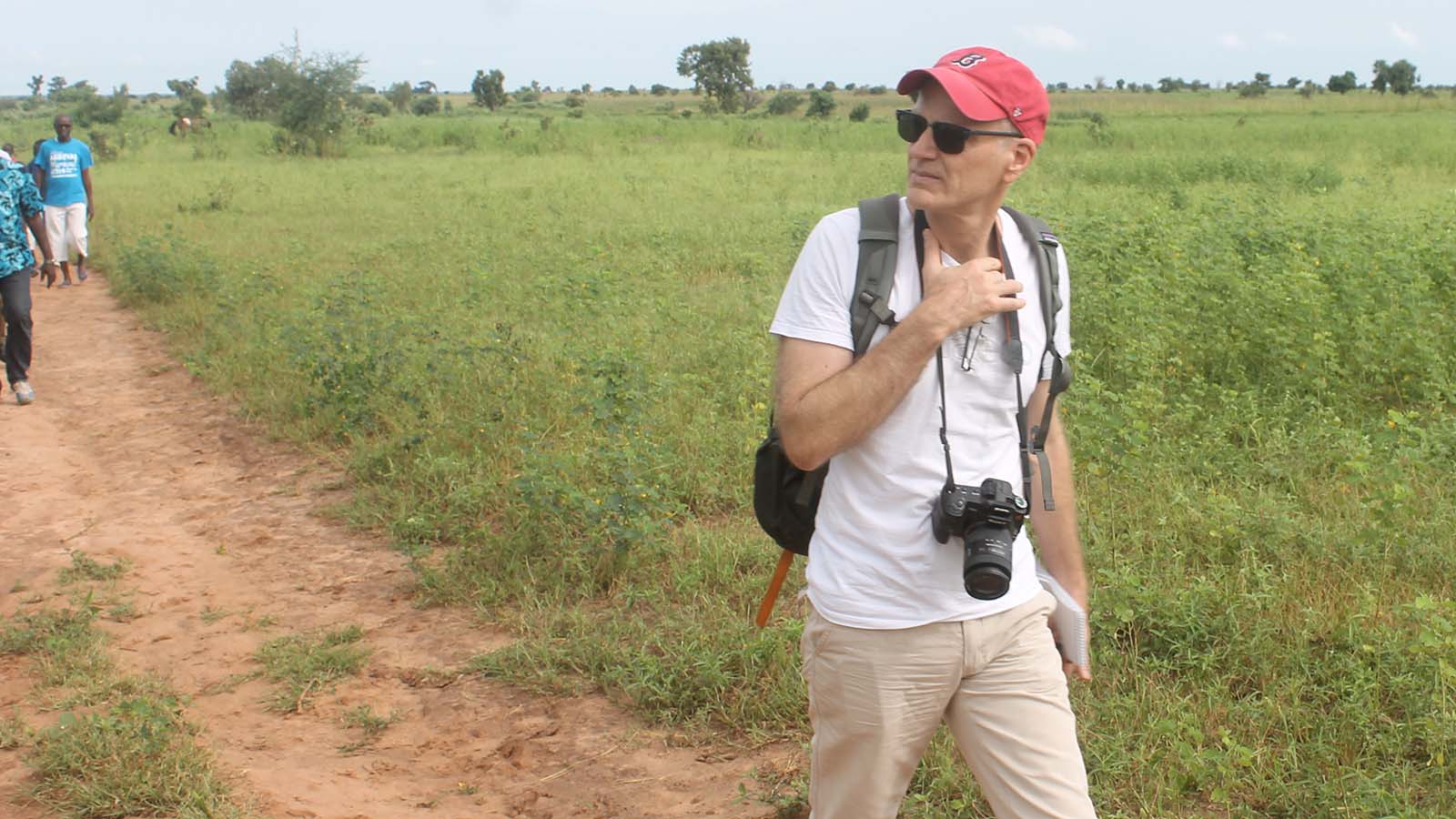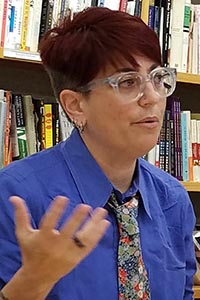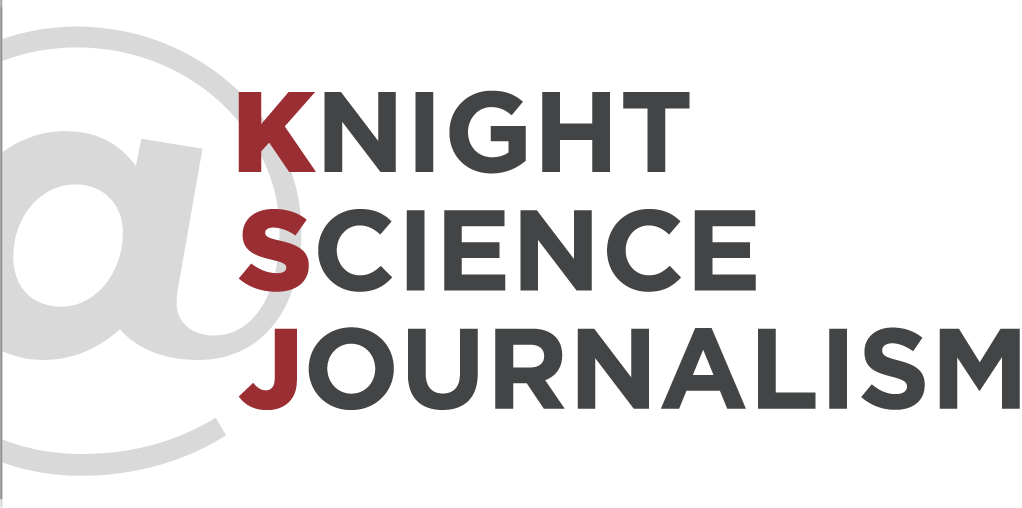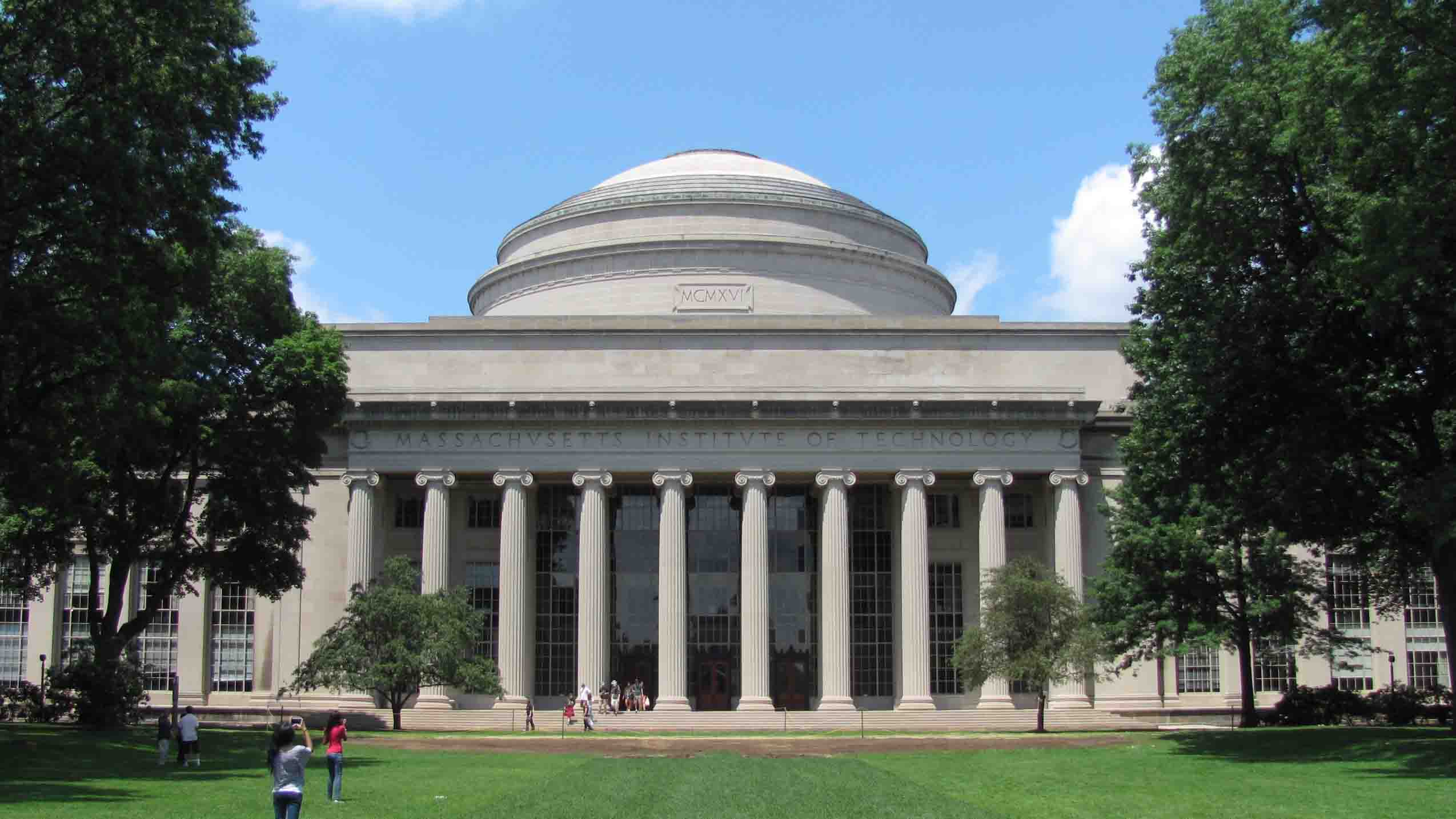
Yves Sciama on a reporting trip to Senegal.
“A bunch of new things are happening to me,” writes Yves Sciama (2013-14) from just outside Grenoble, France, adding (with a wink emoji), “Some of them may actually have some influence on our beloved profession — which tends to be very nationally insular.”
On Jan. 29, Yves was elected president of AJSPI, the French science journalists’ association, whose board includes KSJ alumna Chloé Hecketsweiler (2016-17), of Le Monde. He has been instrumental in organizing two important conferences: the 2018 European Conference of Science Journalists in Toulouse, France, and the 2019 World Conference of Science Journalists in Lausanne, Switzerland. (Another board member and instrumental figure in the WCSJ2019 conference is Fabio Turone, also 2016-17.)
Yves encourages fellow alumni to join him at the Toulouse conference, this coming July 8. “The focus of the conference will be on the independence of both science and journalism, and we will talk a lot about conflict of interest and other such issues.” The meeting will include a Kavli workshop on science editing that will include sessions on fact-checking, vetting science stories, and more.
For the world conference in 2019, Yves is a member of the governing board and chair of the all-important program committee. (KSJ’s director, Deborah Blum, had that position for the 2017 conference in San Francisco.) He’s already drafted several Knight fellows to work with him: Iván Carrillo (2016-17), Maryn McKenna (2013-14), and Jane Qiu (2017-18).
“Our times call for a science journalism with a little more teeth,” Yves writes. “I want to push for a more interconnected and investigative vision of our profession, and help colleagues find new tools and ideas to challenge science more.
“But my passion fundamentally remains journalism, and I already look forward to two years from now, when the conferences are over and it will be time at last to head back to my utmost pleasure: reporting.”
“American Eclipse,” by David Baron (1989-90), is a finalist for the PEN/E. O. Wilson Prize for Literary Science Writing. The book, subtitled “A Nation’s Epic Race to Catch the Shadow of the Moon and Win the Glory of the World,” tells the story of the total solar eclipse that crossed the American West in 1878, attracting many of the era’s great scientists — including Thomas Edison and the Vassar astronomer Maria Mitchell — to the frontier. You can read a chapter David left out of the book in Undark. “American Eclipse” is also an Amazon top science book of 2017.
Maryn McKenna (2013-14) also has an Amazon top science book of 2017: “Big Chicken: The Incredible Story of How Antibiotics Created Modern Agriculture and Changed the Way the World Eats.” You can read an excerpt from that book in Undark.
“Big Chicken” is also one of Smithsonian.com’s 10 best science books of 2017; a ScienceNews favorite science book of 2017; and a favorite food and farming book of 2017on Civil Eats, among other honors. And at the Harvard Book Store on Feb. 27, Maryn will be discussing the book with Nicholas Evans and signing copies. More “Big Chicken”-related events can be found here.
Meera Subramanian (2016-17) has completed four stories for her InsideClimate News series Finding Middle Ground: Conversations Across America. In Georgia, she met fifth-generation peach farmers whose crop failed after a too-warm winter. In West Virginia, she spoke to people who were trying to reconcile the effects of a devastating local flood with what their preachers were telling them about biblical end times. Up in Wisconsin, a father-daughter team of dogsledders had different explanations for the ongoing changes in their weather-dependent sport. And West Texas — a land of oil and gas, cows and cotton — is embracing wind energy and the steady jobs and income it provides. Meera’s series will continue through 2018.

Here’s what alumni are writing: a compendium from Federico Kukso (2015-16).
Marcia Bartusiak (1994-95): “Astronauts’ pre-flight peeing ritual and other marvels of space station life,” The Washington Post.
Richard L. Brandt (1991-92): “How do governments shape the course of innovation?” MIT Spectrum.
Dan Falk (2011-12): “In ‘Life 3.0,’ Max Tegmark Explores a Robotic Utopia — or Dystopia” and “‘River of Consciousness’: Oliver Sacks’ Final Essays on Attention, Memory, and Life,” Undark.
Teresa Firmino (2008-09): “Martin Rees: I am a technological optimist but a political pessimist,” Público (in Portuguese).
Cynthia Graber (2012-13): “The Ancient Origins of Dieting” and many other pieces for The Atlantic.
Daniela Hirschfeld (2009-10): “Uruguayans who modify the human genome,” El Observador (in Spanish).
Sascha Karberg (2008-09): “CRISPR is not always genetic engineering,” Der Tagesspiegel (in German).
Federico Kukso (2015-16): “Large Millimeter Telescope: The cathedral of Mexican astronomy,” Agencia SINC (in Spanish).
Robin Lloyd (1998-99) and Steve Mirsky (2003-04): “Tech honcho wants innovation for the bottom billion,” Scientific American. Robin is also a regular contributor to Undark.
Steve Nadis (1997-98): “What planets beyond our solar system may harbor life?” MIT Spectrum.
Annalee Newitz (2002-03): “Google raters at Leapforce settle legal complaints over abuse, wages owed,” Ars Technica.
Adam Rogers (2002-03): “How did President Trump do on his physical? It’s complicated,” and many other pieces for Wired.
Valeria Román (2004-05): “Two Argentine biologists create a mini-machine that NASA astronauts now use to study DNA,” Infoba (in Spanish).
Yves Sciama (2013-14): “France brings back a phased-out drug after patients rebel against its replacement,” Science.
Meera Subramanian (2016-17): “Finding Middle Ground: Conversations Across America,” InsideClimate News.
Mark Wolverton (2016-17): “How can we measure damage?” MIT Spectrum. “Dismantling doomsday: Daniel Ellsberg on the risk of nuclear apocalypse,” Undark. “Counting down to the apocalypse: Lisa Vox’s ‘Existential Threats,’” Undark.




Leave a Reply